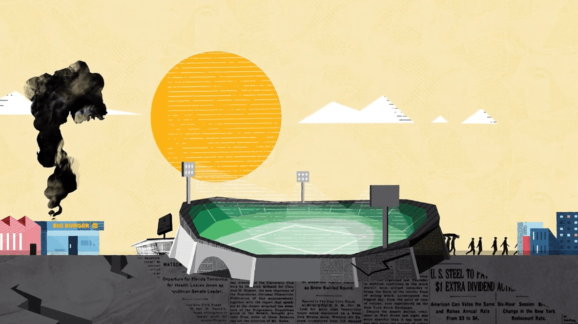Welfare for Billionaires: Stadium Subsidies Are Pure Cronyism

Our old friend (and former Competitive Enterprise Institute journalism fellow) Tim Carney is doing excellent work at the American Enterprise Institute these days, where he is shining a light on the huge costs and breathtaking unfairness of corrupt government handouts to private parties—what we call cronyism. His “Victims of Cronyism” video series is a great resource for understanding and teaching how subsidies, tax credits, and handouts hurt Americans while enriching politically well-connected people and companies.
The most recent video in the series, “Victims of Subsidies” (above), focuses on some of the most outrageous cronyism in the country today—municipal handouts for professional sports stadiums and arenas. I like to call it “welfare for billionaires,” given the net worth of most major league franchise owners. Tim lays it our very simply: “When stadiums get special tax credits, that shifts more burden on to the taxpayer. When they get cold, hard cash, that also comes from the pockets of the taxpayer.”
A sizeable body of academic research has found that, contra the claims of stadium developers and team owners, taxpayer subsidies are a net loss for the communities that provide them. The Mercatus Center’s Michael Farren wrote in 2017:
…a sizable body of academic research indicates that subsidizing a professional sports facility does not provide the benefits claimed by proponents. In fact, as we discuss here, stadium subsidies actually create hidden costs for the local economy. As a result, subsidizing professional sports with public funds is not in the best interest of the community.
Scott A. Wolla, writing for the Federal Reserve Bank of St. Louis in 2017, also presents a very strong case against using taxpayer money to subsidize sports stadiums:
…economists generally oppose subsidizing professional sports stadiums. When surveyed, 86 percent of economists agreed that “local and state governments in the U.S. should eliminate subsidies to professional sports franchises.” Perhaps economists just do not like sports? Actually, many economists love professional sports—including former Federal Reserve Chair Ben Bernanke, an ardent Washington Nationals fan. Rather, it is the provision of taxpayer money in the form of subsidies that economists generally oppose. In a 2017 poll, 83 percent of the economists surveyed agreed that “Providing state and local subsidies to build stadiums for professional sports teams is likely to cost the relevant taxpayers more than any local economic benefits that are generated.” In their book, Sports, Jobs, and Taxes, Roger Noll and Andrew Zimbalist present a comprehensive review of stadium investments. In all cases, they find a new sports facility to have extremely small (or negative) effects on overall economic activity and employment. Furthermore, they were unable to find any facilities that had a reasonable return on investment. Sports economist Michael Leeds suggests that professional sports have very little economic impact, noting that a baseball team (with 81 regular-season home games per year) “has about the same impact on a community as a midsize department store.” His research suggests that if every professional sports team in Chicago (including the Cubs, White Sox, Bears, Bulls, and Blackhawks) were to suddenly disappear, the economic impact on Chicago would be a fraction of 1 percent.
For a slightly more optimistic take on the issue, see the 2015 study “Virtuous Capitalism: Why There Is Less Corruption in Business than You Think” by my colleagues Fred Smith and Ryan Young. See also my review of Tim’s latest book, “Alienated America: Why Some Places Thrive While Others Collapse” from earlier this year.